The trip did start off quite disastrously. We met early in the morning on May 19th at the Little Rock airport, luggage and passports in hand. I also brought along the camera and a ton of film. We sat and waited to board the plane, but there was a delay. And then we waited and waited some more. It turned out that one of the engines wasn't working, and the delay meant that we missed our connecting flight in Dallas. The delay stretched on longer, and the airline tried to find a way to move us on. After considering splitting apart our travel party, having one half fly to St. Louis, and the other to Dallas, they finally announced that the plane was fixed and we were ready to go.
Of course the delay totally screwed up the flight plans, putting us hours behind. Our new schedule had us fly to Dallas, and then to New York LaGuardia. There we would take a bus to New York JFK, and then have a long eight hour layover. From there we flew to London, where we had another eight hour layover. Finally, we were able to make the short flight over to Dublin. The double eight hour layovers, along with the hours spent waiting in Little Rock, meant that we arrived in Dublin in the early evening. We were supposed to arrive in the early morning, and our first day of seeing Ireland was gone and wasted.
We met our bus driver, who would be escorting us across the country for the next week or so. He dropped us off in a suburb in northern Dublin, where we would meet our host families. Instead of hotels, we were staying with host families, I guess so we could get better acquainted with the local culture (or to save money). But our host family in Dublin was awesome, the best ones on the trip. It was an old couple (someone's grandparents), who lived in a little flat that looked like it hadn't been updated since the 1970's.
The Grandmother picked us up in her tiny car and whisked us off to their place. They were funny, although a little nervous at first. They said they had never hosted Americans before, and weren't sure what to expect. They said the worst students they hosted were two Italians, who had gotten drunk on red wine and proceeded to throw up all over the house. Luckily for us, and them, neither of us did any throwing up.
Besides providing a place to sleep, the host families had to provide breakfast and dinner. For the several nights that we were in Dublin, our host family prided themselves on serving up what they said was American food - hamburgers and pizza. It was good, but they did give us a big Irish breakfast everyday.
After dinner on the first night, our host family hinted that we should go out and hit some pubs. We were already planning on it, of course, but they wanted us out of the house so they could go to a pub as well. We asked where they were going, and they said we wouldn't like it, since it was an old person's pub. They told us of a few other places, all within walking distance. Then the old grandpa got down on and started to crawl across the kitchen floor, saying this is how we would be making it back home that night! We met up with some of the other students from the trip, and went to one of the pubs. I walked inside, and the pub was playing a U2 song - I really felt like I was in Ireland. Guinness tastes so much better when you have it in Ireland, too.
The next morning we were up and met the bus for the drive to some cool places north of Dublin. The first stop was Newgrange, a Megalithic Passage Tomb that was built around 3200 BC (this makes it older than the Pyramids). Newgrange is famous for what happens every year at the winter solstice. The light from the rising sun passes through a narrow box over the door to the tombs, carrying sunlight into the deep chamber within. This lasts for a whole 17 minutes, each year.
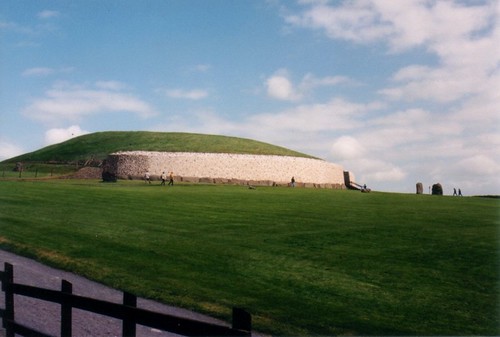
Newgrange overlooks the River Boyne, which was the site of the Battle of the Boyne between King William II and King James II in 1690.
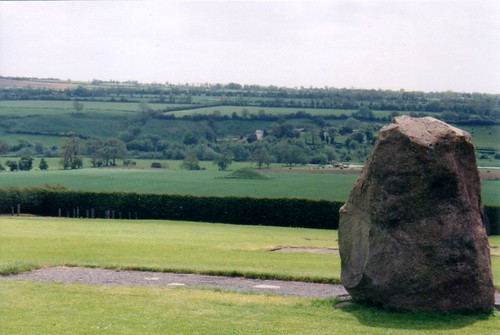
We walked past the intricately carved stones that lined the entrance and went into the back of the chamber, deep within Newgrange. It was an awesome place. I have lived in Arkansas my entire life, and it was amazing to see a place that had been around for so long, and had so much history happen right outside of it.
From there we passed through the town of Drogheda, which was founded by the Danes in the year 911.
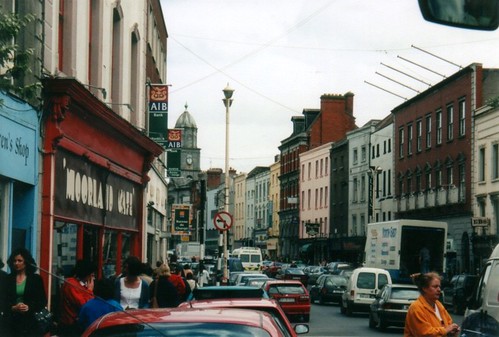
From there we drove up to Monasterboice, the ruins of an old Christian settlement. It was founded in the late 5th century by St. Buite, who died around the year 521. Monasterboice was once an important center for religion and learning, and is dominated by a 35 meter tall high tower.
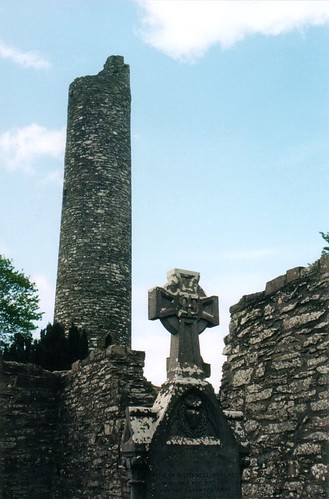
One of the popular attractions at Monasterboice is Muiredach's High Cross, which is regarded as the finest high cross in all of Ireland. It is named after an abbot, Muiredach mac Domhnaill, who died in 923 and features carvings with scenes from both the Old and New Testaments of the Bible.
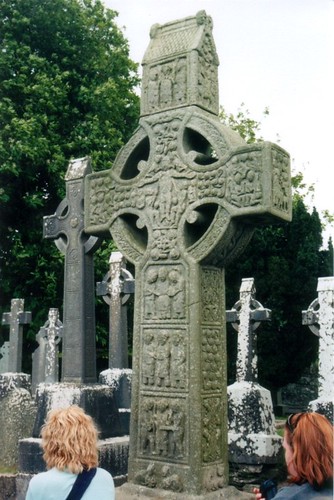
One more view from Monasterboice:
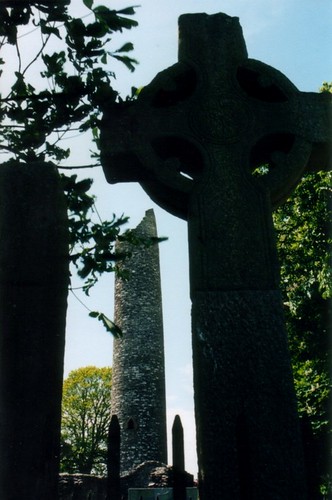
The next stop on our tour of the area was the Hill of Tara, in County Meath. This is a description of the Hill of Tara that I borrowed from the internet:
The Hill of Tara was the seat of the Kings of Ireland until the 6th century. The Hill is also thought to be capital of the Tuatha Dé Danann, pre-Celtic dwellers of Ireland. When the Celts established a seat in the hill, the hill became the place from which the kings of Meath ruled Ireland with godly status. Both the Hill of Tara as a hill and as a capital seems to have political and religious influence, which diminished since St. Patrick's time. A grave was found near the hill that is supposedly that of King Lóegaire, who was said to be the last pagan king of Ireland.
In recent news, a highway may be built within a mile of the Hill, although there is a huge fight for that to happen.
This old church sits near the hill, and now serves as a visitor center.
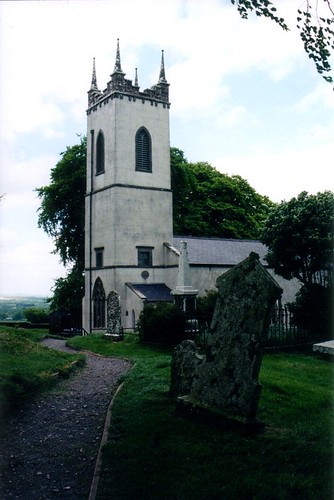
There isn't much to the Hill of Tara now, just hints as to what this area must have been like in Celtic times.
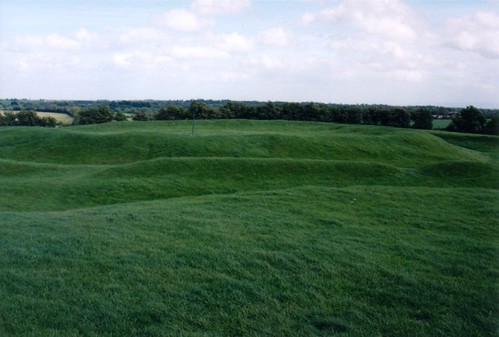
At the top of the Hill of Tara sits a circular Iron Age hill fort, known as Ráith na Rig. The most prominent earthworks within are the two linked ringforts known as Teach Chormaic (or Cormac's House). The tour guide asked if any of us were familiar with the "legend of Cormac?," and the class laughed a little and said that there was a Cormack here in the group with them. Well, it turns out that the legend is about a Cormac mac Airt, who was the High King of Ireland. According to wikipedia, "He is probably the most famous of the ancient High Kings, and may have been an authentic historical figure, although many legends have attached themselves to him, and his reign is variously dated as early as the 2nd century and as late as the 4th. He is said to have ruled from Tara, the seat of the High Kings of Ireland, for forty years, and under his rule Tara flourished."
Cormac ruled in Tara for 40 years until he was blinded by a spear in the eye (typical Cormack family luck). A disfigured king wasn't able to rule in Tara, so Cormac stepped down and would later choke to death on a salmon bone. Of course, some histories say this was caused by a curse from a druid after Cormac had converted to Christianity. But I am able to trace back my family history to Ireland, so perhaps I am a long lost descendant to King Cormac?
This is the view of Teach Chormaic, or Cormac's House. Notice the sheep grazing peacefully along the historic hills and fields.
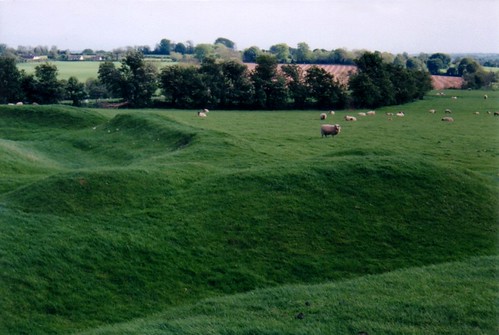
This sign was standing near the Hill of Tara:
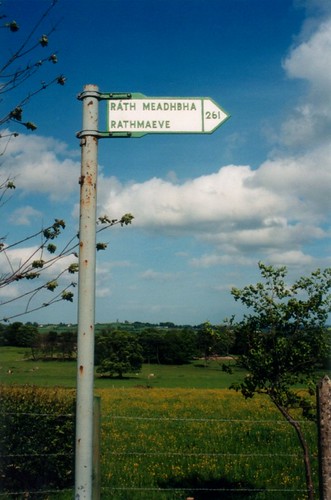
From there we traveled back to Dublin, and back to our host family's house. This was the view from in front of their house, in the cozy Dublin suburbs.
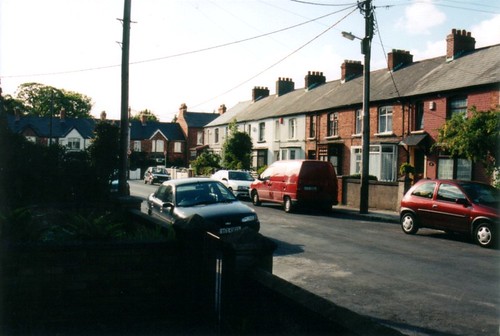
After dinner that night we went to a different pub, which we would go back to every night we were in Dublin - Graingers.
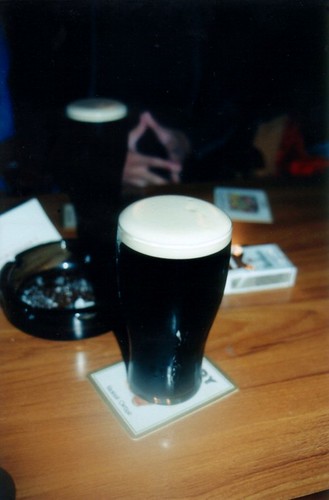
The next day we did a tour of Dublin, a beautiful city where I felt right at home. The tour bus cruised through the narrow streets, passing by several historic sights:
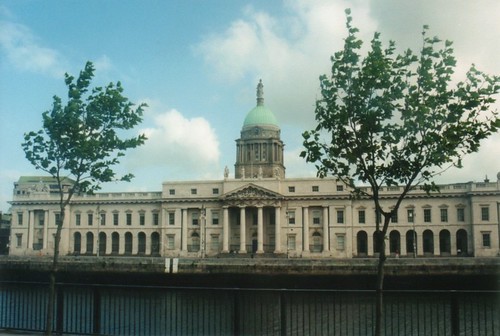
The Custom House, built in 1791.
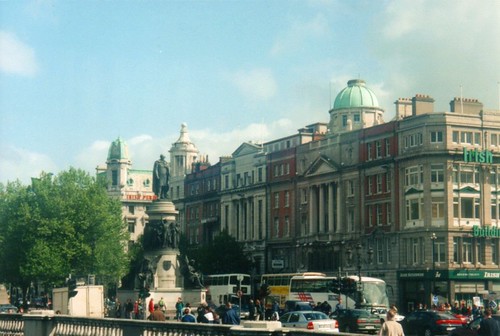
O'Connell Street.
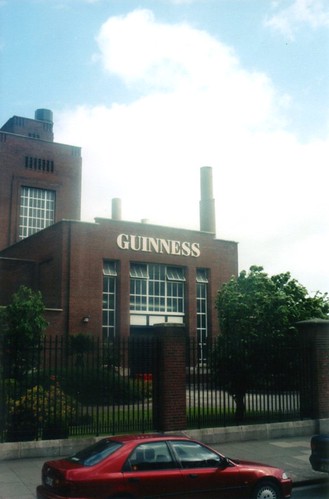
Of course, the Guinness brewery.
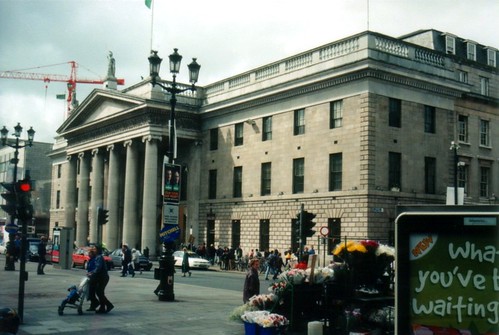
The General Post Office, along O'Connell Street. This was the site of the 1916 Easter Rising.
The tourbus let us out at Trinity College, where we went to see the ancient Book of Kells. I was impressed with the amazing Long Room in the Trinity College Library, with walls covered in old books. No photography allowed, however.
From there we had some free time to get lunch, so we explored the area around Trinity College.
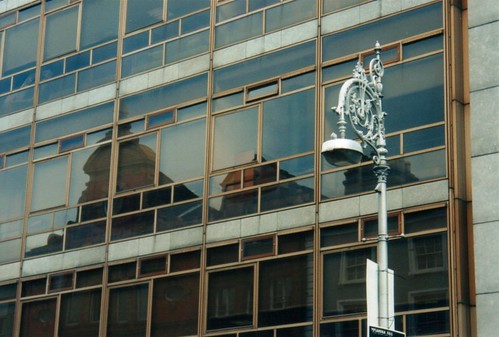
We passed by a few markers set in the concrete that followed the steps of Leopold Bloom in James Joyce's book Ulysses. After the trip I did sit down to read the book, and well, thank goodness for Cliffs Notes or else I would have no idea what was going on! I need to read it again. But this marker shows a point in the book. It says: You're in Dawson Street, Mr. Bloom said. Molesworth Street is opposite. Do you want to cross? There's nothing in the way.
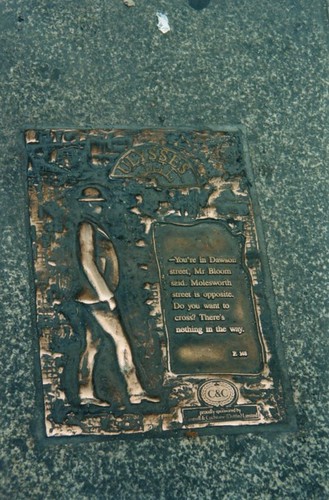
Dublin has some great architecture, it is a great old city to explore.

Our next stop was St. Stephen's Green, a neat park. The arch here was built in 1907.
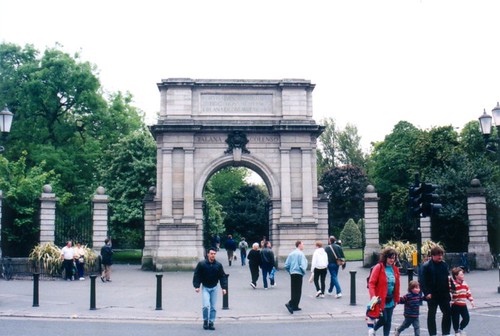
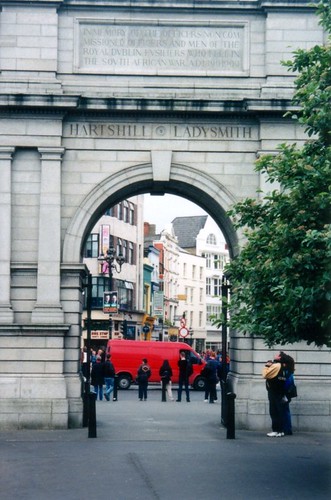
Our next stop was a visit to the National Museum, located right next to Leinster House, the parliament building for the Republic of Ireland.
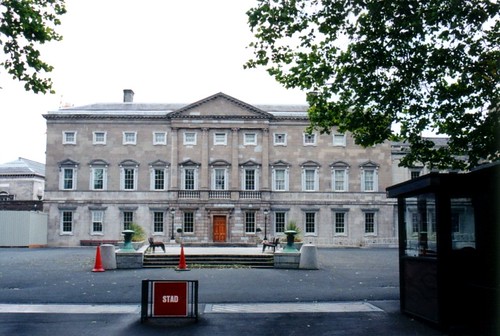
After a nice tour of the museum, it was back the host family's house for another home cooked American dinner.
The next day we took the bus on a trip to Kilkenny, and the first stop was Kilkenny Castle, built in the 12th century.
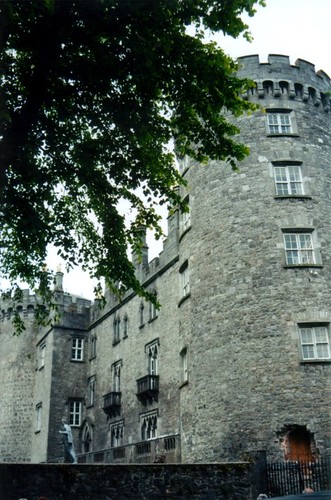
There wasn't any photography allowed in the castle, and my camera was actually taken away at the front entrance. The inside of the castle was great, especially the Long Gallery that was filled with old tapestries. I got a postcard of it, at least.
After the tour I reunited with the camera and got this view from the castle grounds, looking over the River Nore - with St. Canice's Cathedral and the Kilkenny brewery in the distance.

This is the view of the formal gardens at the front of the castle:

After the castle we had time to take a lunch and then make our way to St. Canice's Cathedral. After a quick bite to eat, we sat out and explored some of the city. It was a great town, with compact medieval streets.
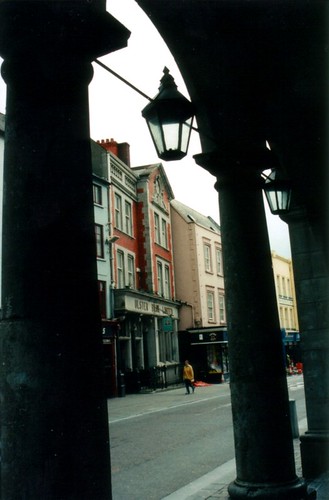
New Building Lane:
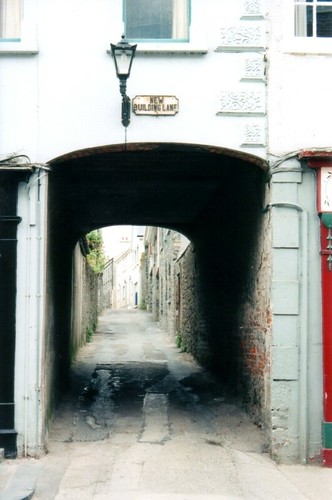
We soon made our way up these old steps to St. Canice's Cathedral.
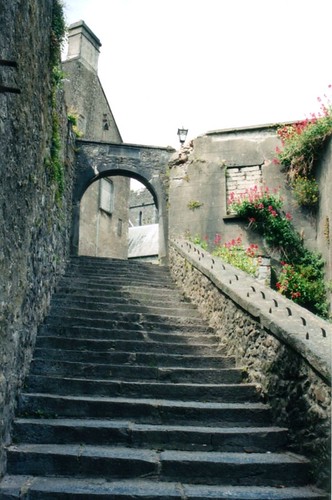
St. Canice's Cathedral is the second longest medieval cathedral in Ireland. The building was begun in 1197 on the site of an earlier church of St. Canice, Kilkenny's patron saint. The Cathedral suffered during Cromwell's siege when he broke many of its windows and stabled his horses inside. The round tower beside the main building was built in 847 A.D. by O'Carroll, king of Ossory, for the defense and protection of church persons and valuables.
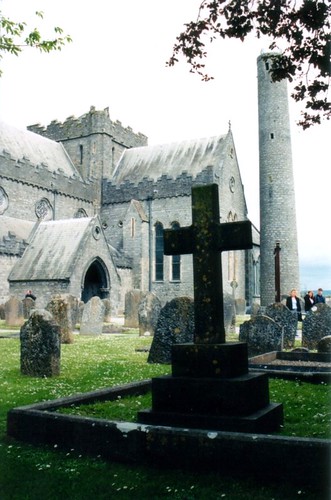
Usually you can climb up to the top of the round tower, but it was closed that day.
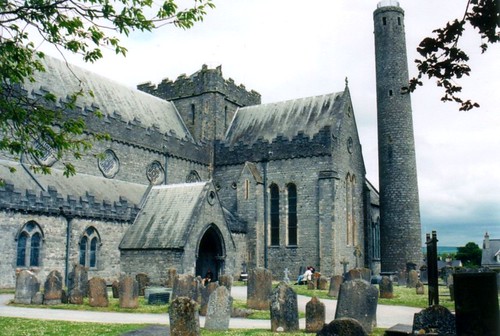
And the inside of the cathedral:
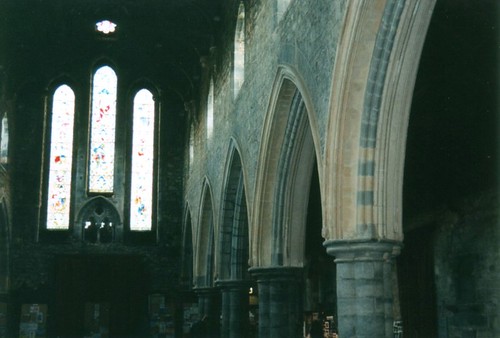
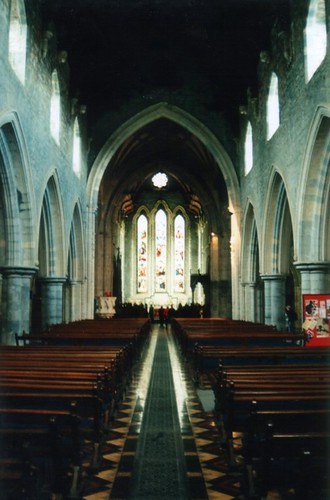
From there we got back on the bus and headed back to Dublin. The next day would take us to one of my favorite places in Ireland - Glendalough.


5 comments:
Great trip (except the travel)! Most of my out of country trips include a memorable trip to/from. I enjoyed the very detailed stories and you probably are the decendant of the king. Did you take notes or do you have that great of a memory? We all(most)came from europe at some point.
I have been wanting to go to Ireland for some time now. My great Aunt took a trip about a year and a half ago to trace our family back as far as possible.
I really like the shots, I think film works great for stuff like this. What film did you use? Did you scan these or have them done?
Thanks Mike - it was an awesome trip, and I've been wanting to head back up there again (but can't afford it now). On the trip I tried to take notes of what we did, just so I wouldn't forget anything. My memory isn't that great, I would have forgotten all of it.
Matt - Ireland is a beautiful place, so much beauty and history all compacted on a small island. This was all film, I took 40 rolls out there. This was with Kodak film, I think. I almost always used Fuji when I shot film, but I think I found a good deal on Kodak that made it easy to buy so much of it before the trip. I scanned these myself, which is why the quality isn't that great.
Did oyu scan the film or the prints?
Scanned the prints...
Post a Comment